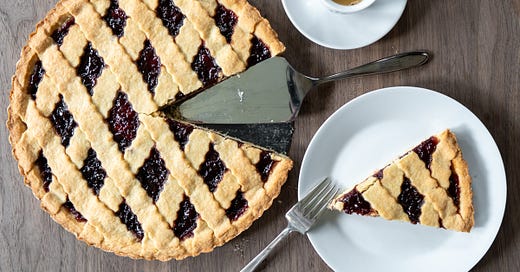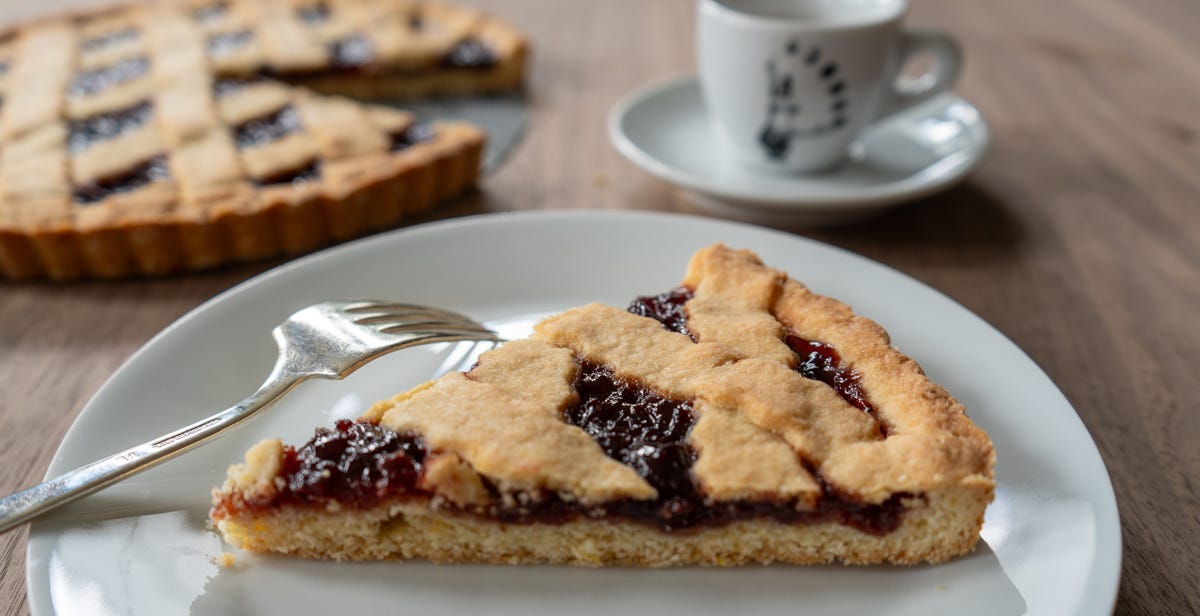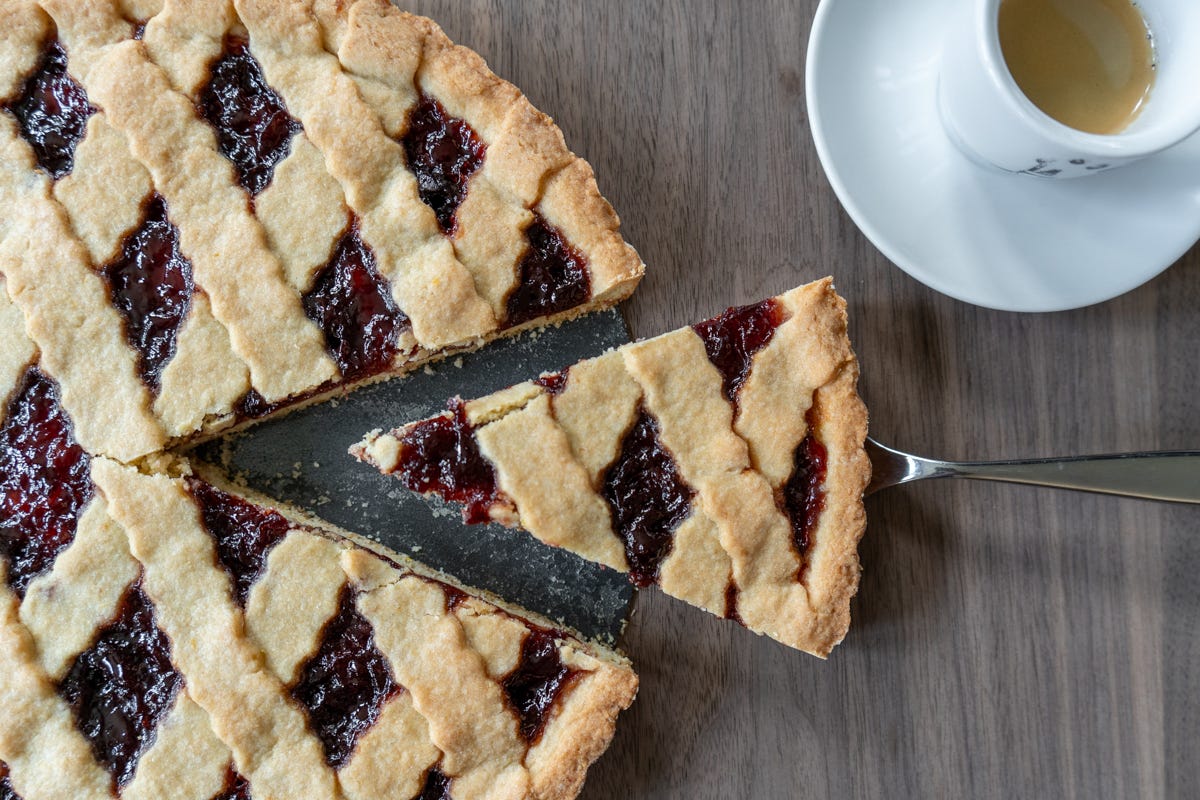It’s been raining buckets and buckets, so instead of enjoying a Saturday afternoon out and about on our Vespas or in our Alfa Romeo Spider, yesterday we were stuck inside the house.
Stefano took the opportunity to tackle our upstairs project - new flooring and paint in the bedrooms. I, on the other hand, decided that the warm, sweet, and buttery fragrance of something baking in the oven would bring some cheer to the gloomy, gray day.
I thought about making a torta della nonna, but while I had plenty of pine nuts, there was no ricotta, and I had no intention of going out in the pouring rain to buy some. I did have a jar of cherry jam, though. A crostata di marmellata would do just fine.
Crostata is sometimes called a tart in English, other times as a pie. Neither translation is quite right, though. Crostata is a class of desserts made from pasta frolla, a shortbread-type pastry crust made with flour, sugar, eggs, and butter. Crostatas are filled with jam, pastry cream, and fruit, or a sweet ricotta filling, and they are often topped with a lattice crust.
Marmellata means “marmalade” or “jam,” and a crostata di marmellata, or jam crostata, is the simplest and most unassuming crostata. Easy to make with pantry staples, it is served for breakfast, with afternoon coffee, or even as a dessert. Crostata di marmellata is as common to Italian households as the chocolate chip cookie is to American ones, but it is still elegant enough to be found on restaurant dessert menus. Crostata di marmellata is traditionally made with apricot, mixed berry, or strawberry jam, but in Rome, you will also find crostata alle viscole, made with wild cherry jam.
Before you start baking
Crostata di marmellata is simple to make but requires a few items that may not be common in kitchens outside of Italy. Before getting started, let’s run through what you will need:
Lievito Pane degli Angeli is an Italian leavening agent used in crostata di marmellata and many other Italian baked goods. If you don’t have any, you can substitute baking powder.
Farina doppio zero, or 00 flour, is preferred for Italian baking. We use Antimo Caputo Chef’s Flour. However, standard all-purpose flour will work just fine.
Adding lemon zest gives the pasta frolla crust a lovely touch of citrus, so it’s helpful to have a zester.
We make crostata in a 10-inch tart pan with a removable bottom, such as this one. If you don’t have one, a ceramic tart dish or even a pie plate will work.
While not necessary, a fluted pastry wheel allows you to make a pretty lattice for the top of your crostata.
When we bake, we measure ingredients in grams using a digital kitchen scale. We’re partial to this one by Oxo, which has a pull-out display and measures in both ounces/pounds and grams/kilograms. Volume measurements are provided in the recipe below for readers who don’t have a kitchen scale, but we encourage you to try measuring in grams - it’s so much more accurate. To illustrate, try Googling how many cups are in 300 grams of flour and see how many answers you get.









